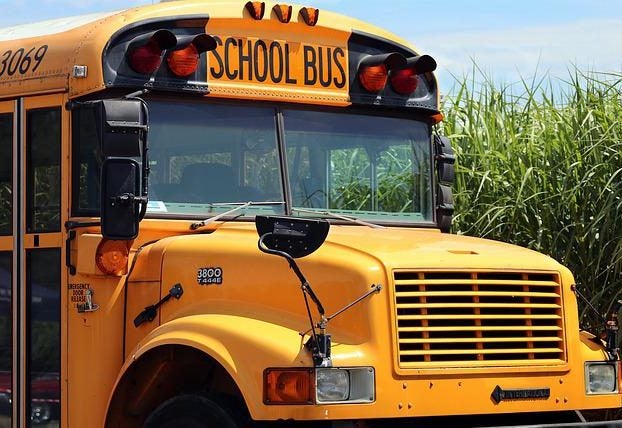Lunenburg County high school class builds toward careers
Published 8:30 am Thursday, October 27, 2022
|
Getting your Trinity Audio player ready...
|
Karen McGrath wants to help her students focus on the future. The Career/Technical Education and Work-Based Learning Coordinator for Lunenburg County Public Schools, her goal is to give students the work experience needed so that after they graduate, each one is prepared to take the next step in building a career.
“I talk to employers every day,” McGrath said. “Local employers, also employers in surrounding counties like Prince Edward, Nottoway and Mecklenburg. I’m working to find internship positions for our students. For instance, we have students in internships in salons. They are in our cosmetology program at the high school and then in the afternoons, they leave to go and work in area salons.”
McGrath is also a member of the Chamber of Commerce, so she gets to talk with employers at their events. The goal is to build connections, to see where local employers have a need for an intern. Then McGrath matches that with a class where students have a need for experience.
“By connecting these young people and helping build their skills, hopefully this can turn into a full-time job possibly after high school or after college,” McGrath said. “It’s also just a great way to connect those young people to these employers to set up that network regardless. It’s a great positive employer relationship that they’ve established that they can use going forward. You know, on their resumes, whether it’s applying for college scholarships, colleges or future jobs, it really does make a difference to set up those relationships.”
Preparing Lunenburg County students for work
McGrath, who is an alumni of Central High School and Longwood College, has been a high school teacher for 15 years. She’s taught business, technology, and marketing classes. In the past three years, McGrath has been both a classroom teacher and a career and technical education coordinator. Recently, her division needed her as a full-time CTE and Work-Based Learning Coordinator, which took her out of classroom teaching, but she’s still making a difference in the students’ lives.
“I work with students on a daily basis, helping them with their resumes, job interviewing, those types of things,” McGrath said. “I wear many hats, but my job with work-based learning in particular is connecting students with our businesses and ensuring they receive credit for that work experience because now, Virginia has a graduation requirement. A student must pass an industry certification while in high school and if they don’t do that, they must have a work-based experience.”
Service learning projects also help
Part of that experience involves service projects. Currently, some of her marketing students are working on one with Lunenburg County Animal Control.
“Service learning is another facet of work-based learning. It’s just like an internship, a mentorship, job shadowing, those types of things,” McGrath said. “The main goal of course is to help the student grow individually, but they also work as a team, work to solve a community issue in hopes that they will continue that good work as they enter adulthood and for the rest of their lives. Wherever they end up living, whether it’s in Lunenburg, or a surrounding county, or a big city somewhere, we want them to always have community awareness, and be willing to help out with real community issues.”
This specific project got started after a conversation with Animal Control Officer Ray Elliot about the animal adoption process.
“(He) was in the process of interviewing some students for an internship. I just happened to ask him, ‘What is your adoption process?’ because I live in Lunenburg County and honestly, I wasn’t aware that I could adopt an animal,” McGrath said.
Making a difference in Lunenburg County
Officer Elliott was able to show McGrath the state website that animal control officers in the state log data numbers of stray animals. Mainly, how much they intake in a year, how many are adopted, how many are transferred to regional shelters, and the numbers of animals euthanized.
“He showed me these numbers and I’m like ‘Wow, compared to other counties, the numbers aren’t super high, but still they’re high.’ For instance, almost 180 stray dogs are found in our county in a year,” McGrath said. “We have a ton of dogs that have to be transferred to regional animal shelters that are larger, of course it increases the likelihood of them being adopted… But there’s a large number of those animals that are transferred there every year.”
These large yearly transfers have been regional shelters such as Southside SPCA, Lab Rescue, and Sanctuary Rescue. McGrath spoke how she educated the students on the status of these animals.
“We had a powerpoint presentation and we showed them the data. And we just let them look at it and we ask them to think about it for a minute or two, raise their hand if they see a problem,” McGrath said. “Immediately when they saw those numbers, they raised their hands.”
What happens next?
Eighty students in marketing class are currently working on a social media campaign to help increase adoption rates. The goal is also to let people know they can get help with feeding pets. The shelter is a nonprofit. They can help get pet food for the owner or cat litter, whatever the need is.
“We’re going to continue to work on this project for days and months and maybe even to next year. In fact, the work really will never stop, even if the numbers come down or they go to zero, because you want to continue your good work,”: McGrath said. “So this is something I can foresee students for years coming to work on and maybe they’ll uncover other issues along the way in the community that we can work on.”



